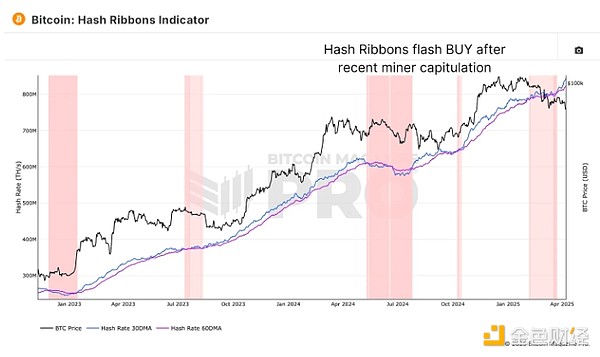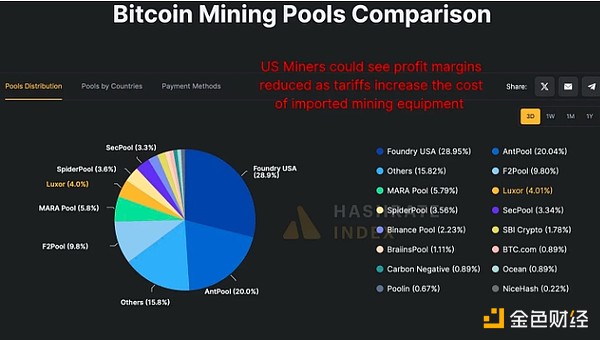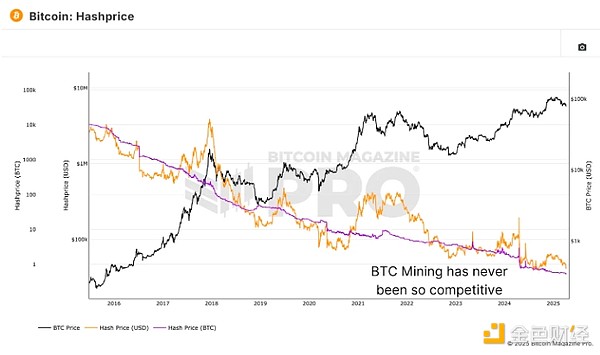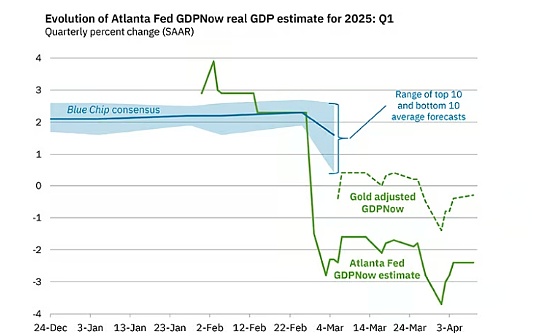Will Bitcoin miners push hash rate to an all-time high BTC break through?

Reprinted from jinse
04/16/2025·5DSource: Bitcoin Magazine; Translated by: Wuzhu, Golden Finance
At present, Bitcoin and even the global economy are shrouded in a whirlpool of pessimism and macroeconomic uncertainty, but miners are still so optimistic, which may be surprising. This article will parse some data that shows that Bitcoin miners are not only sticking to their original strategies, but also accelerating their development, doubling down on betting as many miners retreat. What exactly do they know about what the market may ignore?
Bitcoin hash rate rises parabolicly
Despite the recent poor performance of Bitcoin’s price, the Bitcoin hash rate has soared, breaking through historical highs, and seems to be unaffected by macroeconomic headwinds or price sluggishness. Normally, the hash rate is closely related to the price of Bitcoin; when prices fall sharply or stagnate, the hash rate tends to flatten or decline due to economic pressures faced by miners.
However, today, the hash rate is accelerating in the face of global tariff hikes, economic slowdown and Bitcoin price consolidation. Historically, this degree of divergence between hash rate and price is very rare and often very significant.

Figure 1: There is a significant difference between the current hash rate and the price.
Bitcoin miner difficulty (strongly related to hash rate) has just experienced one of the biggest single upticks in history. This indicator will be automatically adjusted to keep Bitcoin’s block time consistent and will only increase when more computing power flows into the network. The difficulty of such a scale soars, especially when prices are underperforming, is almost unprecedented.
This once again shows that even if the price of Bitcoin does not seem to support miners’ decisions in the near term, miners are still investing heavily in infrastructure and resources.

Figure 2: The recent surge in mining difficulty.
More interestingly, the Hash Ribbons Indicator—an indicator that combines short-term and long-term hash rate moving averages—has recently sent a classic Bitcoin buy signal.
When the 30-day moving average (blue line) breaks through the 60-day moving average (purple line), it marks the end of miners ' surrender and the beginning of the re-emergence of miners' power. Visually, when this crossover occurs, the background of the chart changes from red to white. This usually marks a strong turning point in BTC prices.

Figure 3: Mining machine prices have strengthened again recently, triggering a buy signal.
What is noticeable this time is that the 30-day moving average deviates sharply from the 60-day moving average. This is not only a moderate recovery, but also a reflection of mining companies' heavy bets for the future.
Tariff factors
So, what fueled this mining craze? A reasonable explanation is that miners, especially American miners, are trying to take action before the imminent tariff impact. As the main producer of mining machines, Bitmain is now at the forefront of trade policies, and equipment prices may soar 30% to 50%, or even more than 100%!

Figure 4: Hash rate distribution of Bitcoin in various mining pools.
Given that over 40% of the Bitcoin hash rate is controlled by US mining pools such as Foundry USA, Mara Pool and Luxor, any cost increase will significantly reduce profit margins. Miners may be actively expanding now, as the hardware is still (relatively) cheap and available.
Bitcoin miners continue to mine
Hash prices (revenue per terahertz denominated in BTC) are at historical lows. In other words, in BTC, the revenue per terahertz of operating a bitcoin mining machine has never been so sluggish. Normally, as competition gradually weakens and weaker players exit the market, we usually see a hash price increase at the end of the bear market.

Figure 5: The profitability of miners per terahertz computing power continues to decline.
But this did not happen. Despite poor profitability, miners are not only continuing to operate, but also deploying more computing power. This could mean one of two situations: either miners are competing with declining profit margins to accumulate Bitcoin ahead of schedule; or, more optimistically, they are confident in Bitcoin’s future profitability and are actively buying on dips.
in conclusion
So, what exactly happened? Either the miners are desperately seizing hardware costs, or more likely, they are sending one of the strongest collective confidence signals in Bitcoin’s future in recent years. We will continue to track these metrics in future updates to see if this confidence of miners is proven to be correct.


 chaincatcher
chaincatcher
 panewslab
panewslab